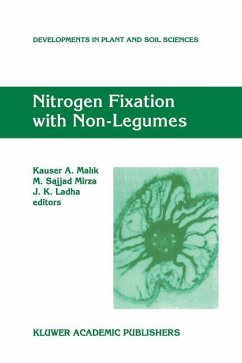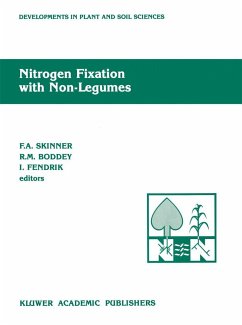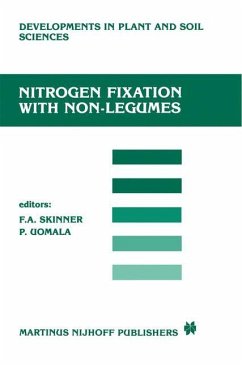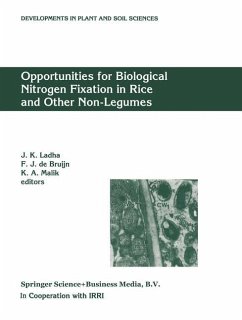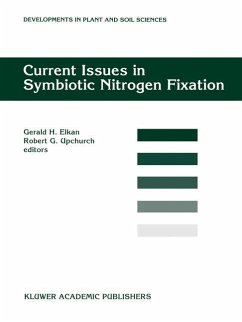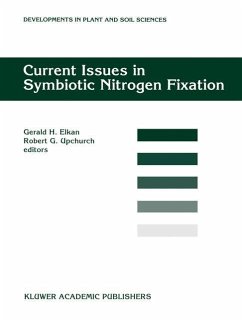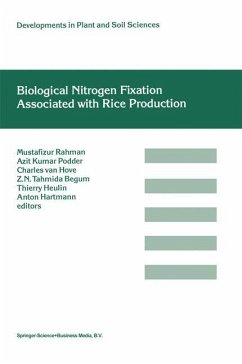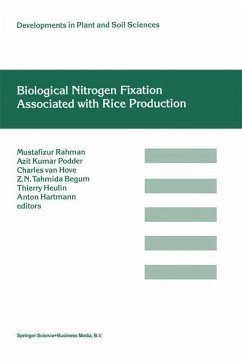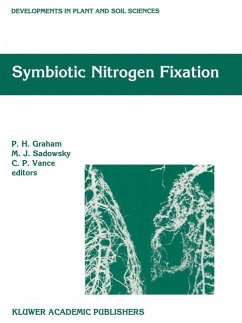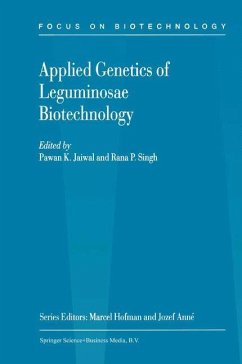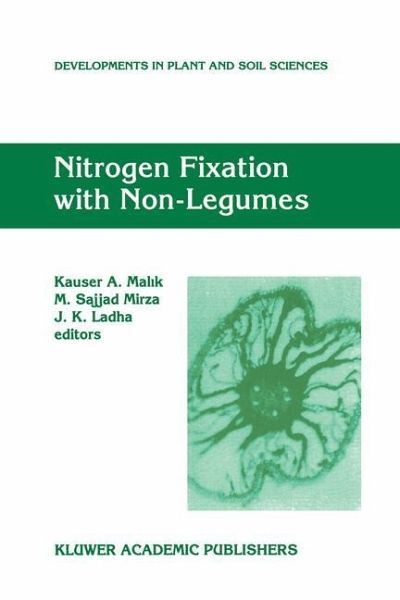
Nitrogen Fixation with Non-Legumes
Proceedings of the 7th International Symposium on Nitrogen Fixation with Non-Legumes, held 16-21 October 1996 in Faisalabad, Pakistan
Herausgegeben: Malik, K. A.; Mirza, M. S.; Ladha, J. K.
Versandkostenfrei!
Versandfertig in 1-2 Wochen
115,99 €
inkl. MwSt.

PAYBACK Punkte
58 °P sammeln!
Diazotrophic bacteria convert atmospheric nitrogen to plant-useable form and this input of nitrogen through biological fixation is of great agronomic importance. The contributions presented in this volume relate to free-living nitrogen fixers and the diazotrophs associated with plants. Symbiotic association of Frankia with non-legumes and cyanobacterial associations are also discussed. Research topics covered in this volume include the biochemistry and genetics of diazotrophs, recent developments in improvement of plant-microbe interactions and their molecular basis, the use of molecular probe...
Diazotrophic bacteria convert atmospheric nitrogen to plant-useable form and this input of nitrogen through biological fixation is of great agronomic importance. The contributions presented in this volume relate to free-living nitrogen fixers and the diazotrophs associated with plants. Symbiotic association of Frankia with non-legumes and cyanobacterial associations are also discussed. Research topics covered in this volume include the biochemistry and genetics of diazotrophs, recent developments in improvement of plant-microbe interactions and their molecular basis, the use of molecular probes in taxonomy and ecology of diazotrophs and reports on field applications, agronomic importance and improvement in methodologies for assessing their contribution to plants. This book provides valuable information not only for researchers working in the field of biological nitrogen fixation but also for biochemistry, molecular biologists, microbiologists and agronomists.





